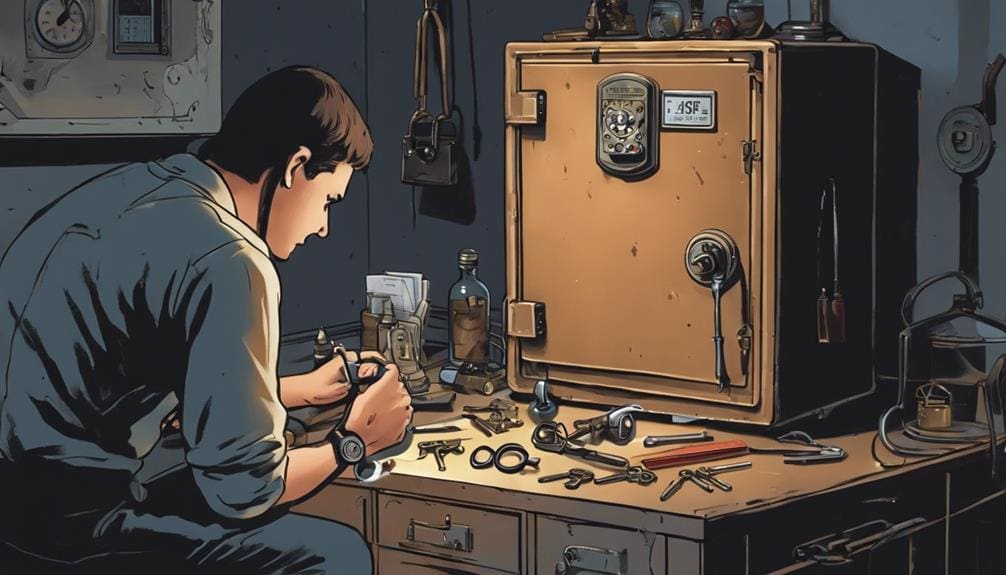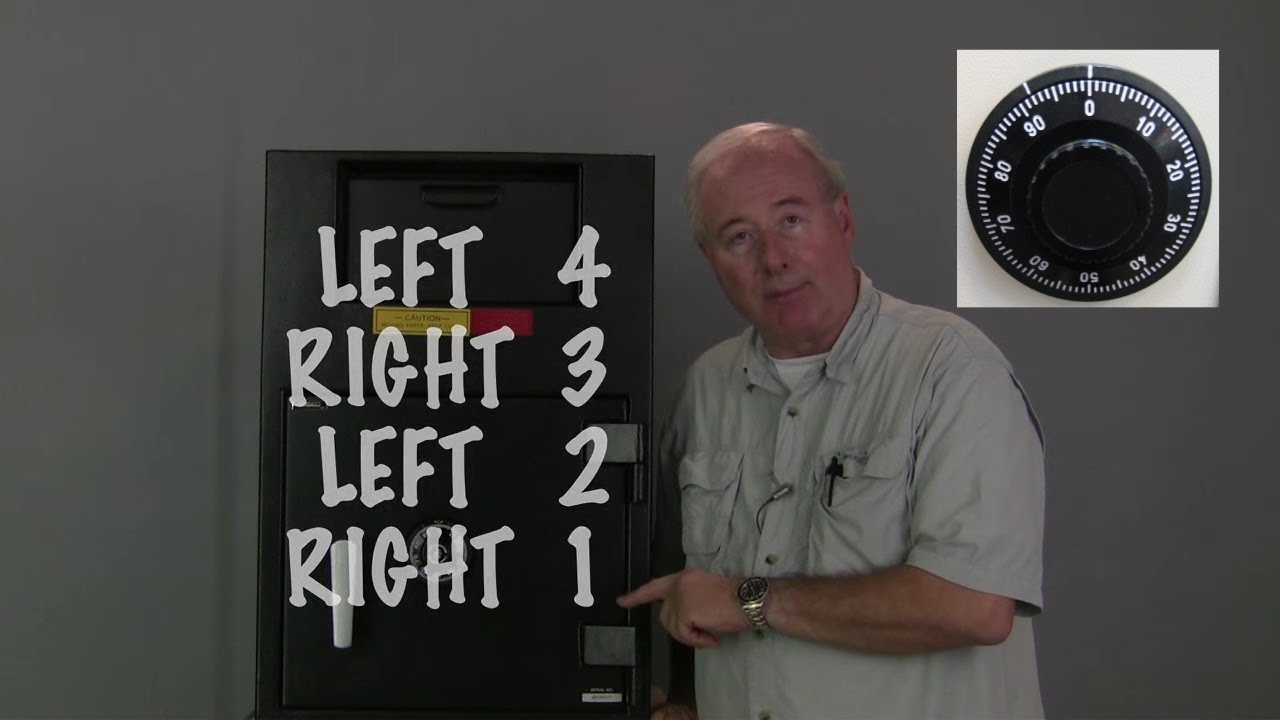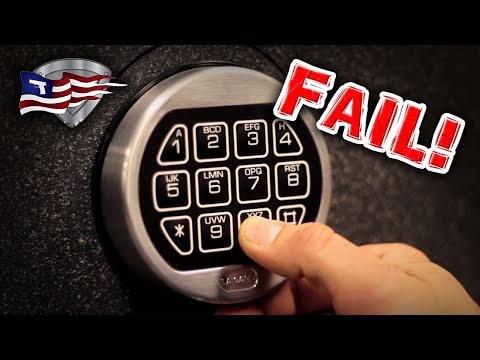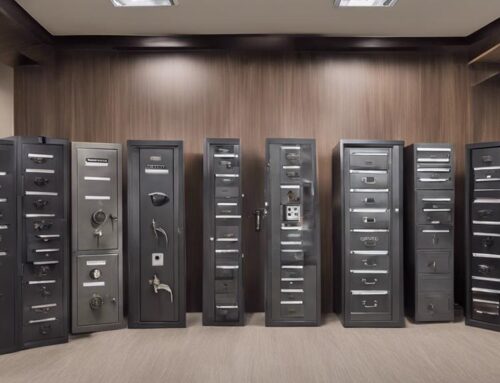If your safe won’t open, first determine if it’s a key or code safe. Inspect for physical blockages and make sure it’s on a stable surface. For key safes, check the key and lock mechanism for damage. In code safes, test the control panel and replace batteries. Don’t forget to verify the code. If you’ve tried multiple solutions and still can’t access your safe, it’s time to contact a professional locksmith. Regular maintenance and keeping spare keys or codes in a secure place can prevent future lockouts. Learn essential steps to address these issues effectively by exploring further.
Key Takeaways
- Check for physical blockages or misalignment around the safe door and locking mechanism.
- Inspect and replace batteries for digital locks to ensure power supply.
- Look for factory reset instructions in the user manual to recover forgotten codes.
- Contact the safe manufacturer for troubleshooting assistance and potential solutions.
- Seek a professional locksmith if initial troubleshooting fails or risks damaging the safe.
Identify Your Safe Type
To effectively troubleshoot why your safe won’t open, you first need to identify whether it’s a key safe or a code safe. This is important because the type of safe determines the potential issues and solutions. Start by examining the lock mechanism. If your safe uses a physical key, you have a key safe. Key safes can encounter problems such as damaged keys or defective locks. Check if the key is bent, broken, or if the lock itself appears worn or jammed.
Alternatively, if your safe features a keypad or a digital display, it’s a code safe. Code safes rely on electronic locks, which can fail due to non-working codes or faulty electronics. Verify the batteries are functional, and try entering your code again. Sometimes, electronic locks may require a reset.
Understanding the type of safe allows you to methodically approach the problem. Key safes often need physical inspections of the key and lock, while code safes may demand checking electronic components and making sure the code is entered correctly. Identifying the type of safe is the first step in diagnosing why your safe won’t open.
Check for Blockages
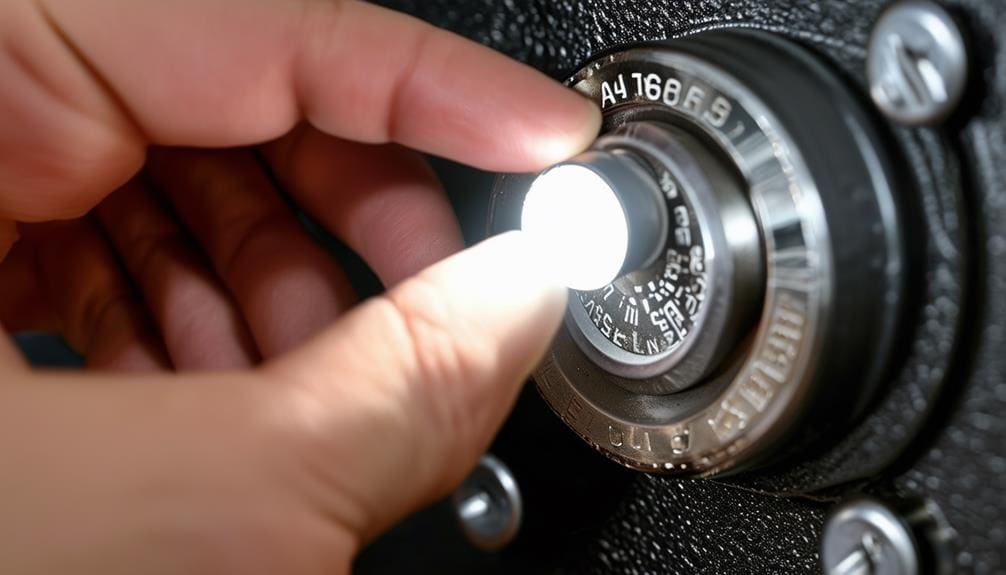
Once you’ve identified your safe type, the next step is to check for any blockages that might be preventing the door from opening. Start by examining the immediate area around the door for any physical blockages such as debris or small objects that could be obstructing it. It’s common for tiny pieces of paper, coins, or other small items to cause a safe to malfunction.
Next, focus on the locking mechanism. Verify that there are no signs of damage or misalignment. A misaligned locking mechanism can cause the safe door to remain shut even if you’ve entered the correct code or used the right key.
Ensure that the safe is on a stable surface. If the safe is tilted or wedged in an awkward position, this could affect the locking mechanism and prevent the door from opening properly.
Additionally, check the hinges and bolts. They need to be functioning correctly and not impeding the door’s movement. Sometimes, hinges can become rusty or bolts can get stuck, causing the door to jam.
If you identify any physical blockages, carefully remove them. By doing so, you increase the chances that the safe door will open smoothly and resolve the issue of the safe that won’t open.
Troubleshoot the Lock
Start by inspecting the lock for any visible issues, such as jammed bolts or loose wiring, which might be causing the malfunction. If you notice any obstructions, carefully remove them to see if the lock resumes normal operation. For digital safes, begin by testing the lock with fresh batteries. Low battery power can often prevent the lock from functioning properly, making it difficult to input your code or operate the lock mechanism.
Next, consider whether multiple wrong combinations have been entered. Some digital safes have a lockout feature that activates after several incorrect attempts, temporarily disabling the lock. Wait the recommended time before trying your code again. Additionally, verify that your code hasn’t been inadvertently deactivated. This can happen with certain digital locks, leaving you locked out even if you enter the correct code.
If these steps don’t resolve the issue, it may be time to seek professional assistance. A locksmith or safe technician has the specialized tools and expertise required to diagnose and fix complex lock problems. Avoid attempting complicated repairs yourself, as this could further damage the lock and make the situation worse.
Address Electronic Malfunctions
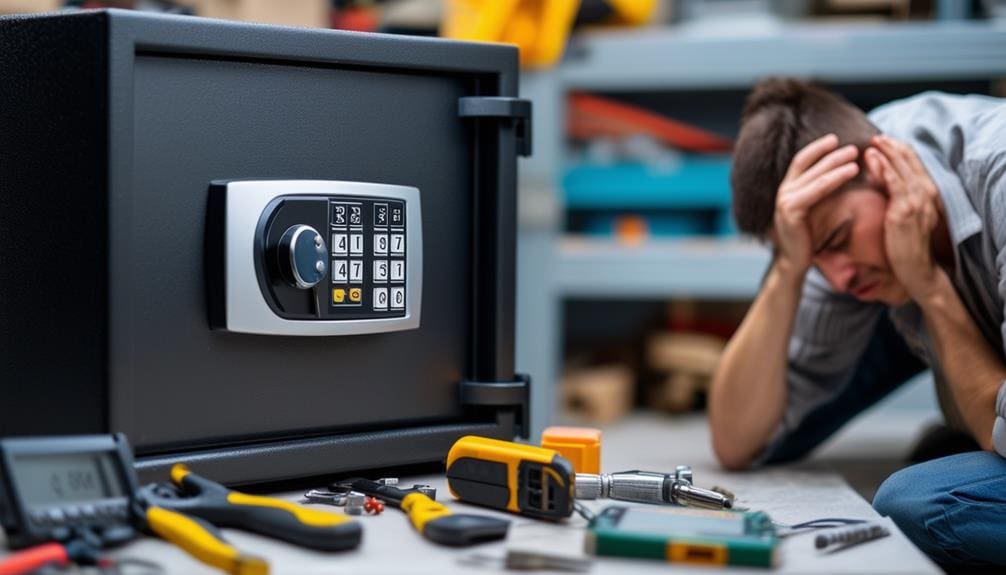
To address electronic malfunctions in your safe, start by checking the battery status to confirm they’re not dead. Next, inspect the control panel for any signs of damage or loose wiring. If the issue persists, you may need to reset or reprogram the code according to your safe’s manual.
Check Battery Status
Make sure you check the battery status of your safe’s electronic lock, as weak or dead batteries often cause malfunctions. Start by locating the battery compartment, typically found on the keypad or inside the door. Carefully remove the cover and take out the old batteries. It’s essential to use the battery type recommended by the manufacturer to maintain peak performance.
Inspect the old batteries for any signs of corrosion or leakage, as this could indicate a more significant issue. Once you’ve removed the old batteries, replace them with a brand new set. Verify that the new batteries are inserted correctly, matching the positive and negative terminals as indicated. After installing the new batteries, reattach the cover securely.
Regularly monitoring and replacing the batteries in your safe can help prevent unexpected lockout situations. Make it a habit to check the battery status periodically, even if the electronic lock seems to be functioning correctly. By doing so, you can address potential issues before they escalate. Remember, a simple battery replacement is often all it takes to resolve electronic lock problems, ensuring your valuables remain safe and accessible.
Inspect Control Panel
After checking the battery status, the next step is to inspect the control panel for any error messages or malfunction indicators. This is important because electronic malfunctions in the control panel can prevent your safe from opening, necessitating thorough troubleshooting.
First, examine the control panel closely for any signs of damage or wear. A cracked screen or unresponsive buttons can be indicators of deeper issues.
Second, check for any error messages or malfunction indicators displayed on the control panel. These can provide clues about what’s wrong with the electronic lock system.
Third, make sure all connections to the control panel are secure. Loose wires or connections can lead to intermittent functionality or complete failure.
Fourth, verify if the control panel is responsive to input. If it’s sluggish or non-responsive, it might be an indication that the internal components are failing.
Here’s a quick checklist to guide you:
- Examine the control panel for physical damage.
- Look for any error messages or malfunction indicators.
- Make sure all connections to the control panel are secure.
- Check if the control panel is responsive to input.
Reset or Reprogram Code
Resetting or reprogramming the code on your safe can often resolve electronic malfunctions and restore functionality to the lock system. When your safe lock isn’t working properly, the first step is to contemplate resetting the code. This process can address various issues, such as unresponsive keypads or malfunctioning electronic components.
Start by consulting your safe’s user manual for specific instructions on how to perform a reset. Typically, this involves entering a factory default code or pressing a reset button located inside the battery compartment. Carefully follow the manufacturer’s steps to avoid any mistakes that could complicate the situation further.
If resetting the code doesn’t solve the problem, reprogramming the code might be necessary. This is particularly useful if you’ve forgotten the combination or if the existing code no longer works. Again, refer to the manual for guidance on reprogramming. This usually entails entering a master code followed by your new desired combination.
Recover Forgotten Codes
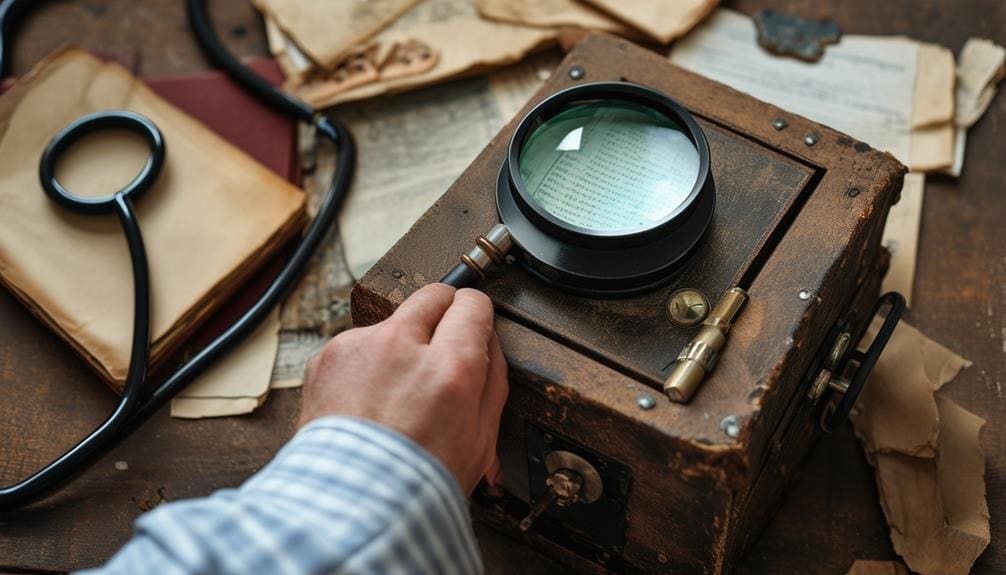
If you’ve forgotten your safe’s code, start by consulting the user manual, which often lists steps to recover the combination. The manual might provide factory reset codes or instructions on how to retrieve your unique combination. Here are some methodical steps to help you recover the forgotten code:
- Find the key: Look for a backup key that might have come with your safe. Many safes include a backup key that can be used in situations where the code is forgotten. This key is usually stored in a secure place outside the safe.
- Contact the manufacturer: If you can’t find the key or the manual, reach out to the safe’s manufacturer. They often have procedures to verify ownership and can provide assistance in recovering or resetting the code.
- Professional locksmith: Seek help from a professional locksmith. Locksmiths have the expertise and tools required to open safes without causing damage and can often help you reset the code.
- Avoid multiple attempts: Don’t repeatedly guess the code. Multiple incorrect attempts can trigger a lockout mechanism, making it even harder to access your safe.
Attempt Simple Fixes
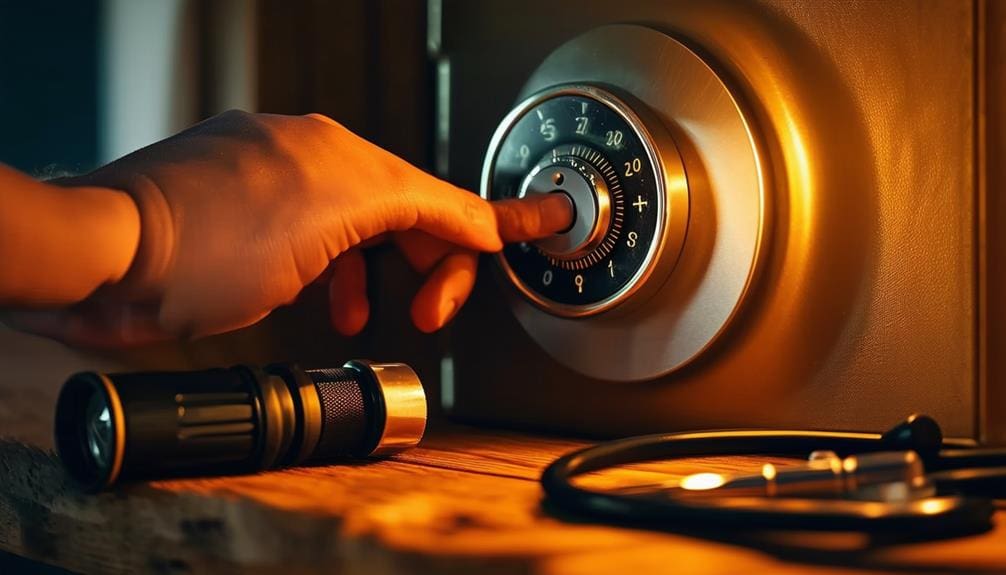
Sometimes, a simple issue like low batteries in your electronic safe lock can prevent you from accessing your valuables. Start by checking the batteries and replacing them if necessary. Fresh batteries can often resolve power issues, allowing you to open the safe without further complications.
Next, verify the wiring and connections in the digital keypad. Loose or damaged wires can disrupt the functionality of the safe’s locking mechanism. Carefully inspect the keypad, ensuring all connections are secure.
If the bolts are jammed, apply gentle pressure to the safe door while turning the handle. This can sometimes realign the bolts and enable you to open the safe. However, avoid using excessive force, as this could damage the components further.
Be cautious not to enter multiple wrong combinations, as this can trigger a lockout situation, making it even harder to access your safe. If you’ve forgotten the code, try resetting it if your model allows for this option.
For more complex issues that can’t be resolved with these simple fixes, it’s best to call a professional. They have the expertise to handle intricate problems without causing damage to your safe or its contents.
Contact Professional Help
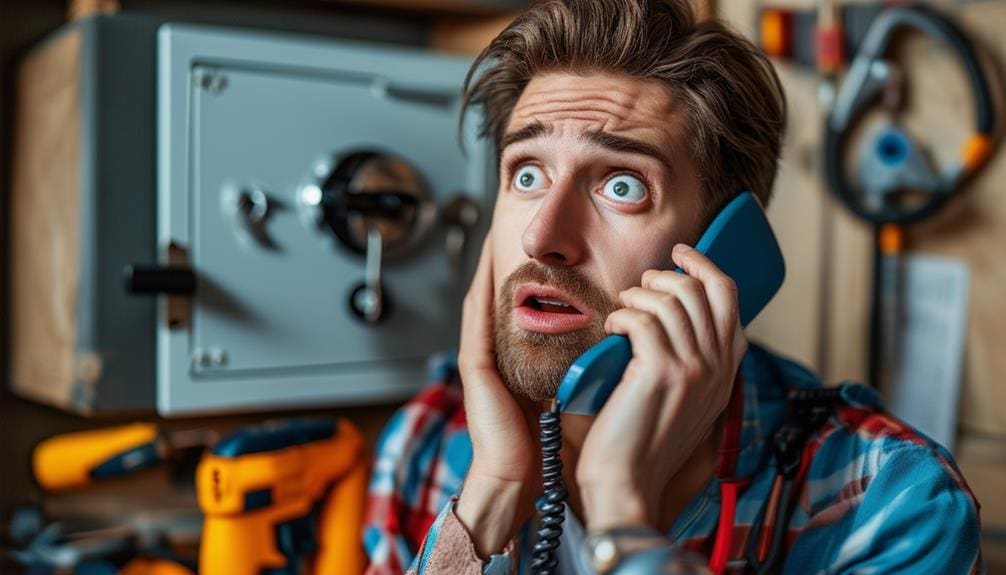
If you’ve exhausted all self-help methods, it’s time to contact a professional locksmith. Choose an expert like Fichet Bauche or Sure Lock & Key, known for their skills in safe opening. Verify they have the right tools and expertise to handle your specific safe model.
When to Call
Reaching out to professional help becomes necessary when you’ve exhausted basic troubleshooting steps and still can’t open your safe. As a safe owner, it’s vital to know when to call in the experts to avoid further complications or potential damage. Here are specific situations when contacting professional help is recommended:
- Complex Lock Issues: If the lock mechanism is overly intricate or you’re unsure about safe manipulation, a professional can diagnose and fix the problem accurately.
- Risk of Damage: If you’re concerned about harming your safe or its contents while attempting to open it, it’s best to find a professional who can handle the task without causing harm.
- Exhausted Self-Help Methods: When you’ve tried all self-help methods, such as resetting the combination, checking the batteries, or using the override key, and still can’t access your safe, it’s time to call for expert assistance.
- Time-Sensitive Situations: In cases where you urgently need access to your safe, a professional locksmith can provide prompt and efficient service to resolve the issue quickly.
Choosing a Locksmith
When choosing a locksmith to assist in opening your safe, it’s crucial to prioritize those with proven expertise and specialized skills in safe manipulation. Begin by verifying the locksmith’s experience in safe opening. This enhances the chances of a successful and damage-free result. Validate their credentials to ensure they have the necessary qualifications and certifications. Reputable locksmiths should have a solid track record, and it’s vital to assess their reputation through recommendations from acquaintances, relatives, or online reviews.
Subsequently, confirm that the locksmith possesses the appropriate tools and expertise for your specific type of safe lock. Not all locksmiths are equipped to handle different safe mechanisms, so this stage is essential. Reach out to professional locksmith services like Sure Lock & Key, recognized for their proficiency in safe opening. This guarantees that you are hiring a dependable and trustworthy service.
Prevent Future Lockouts
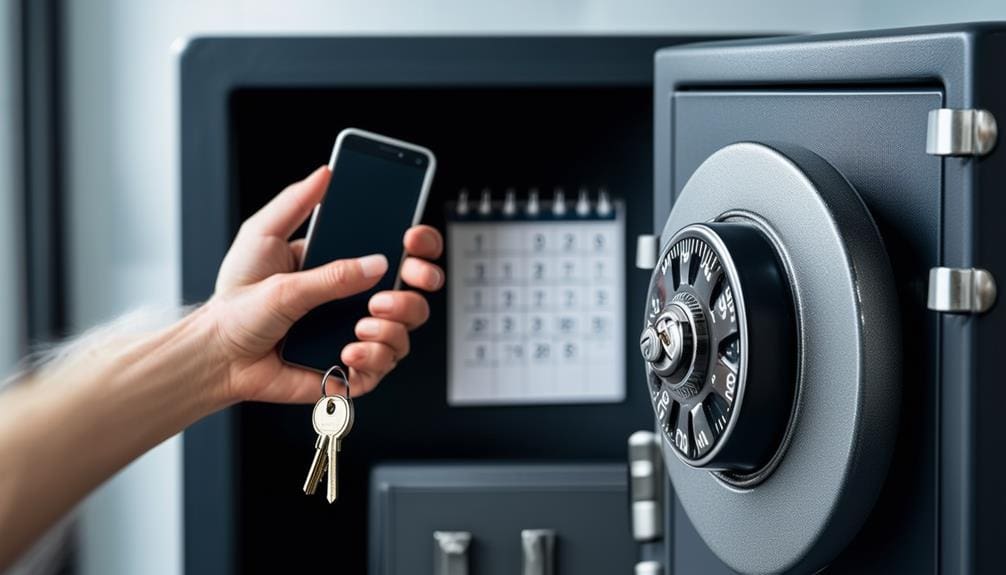
To prevent future lockouts, service your safe every five years and keep a secure record of your combination. This simple step guarantees your safe remains in peak working condition and minimizes the risk of unexpected lockouts. Regular maintenance can help identify and address potential issues before they escalate.
Here are four essential tips to prevent future lockouts:
- Service Every Five Years: Schedule a professional service for your safe every five years to keep it in prime shape. Regular maintenance can help catch mechanical issues early and guarantee that your safe functions smoothly.
- Backup Key: Always make and store a backup key in a secure but accessible place. Having a backup key can be a lifesaver if you forget your combination or if the locking mechanism malfunctions.
- Secure Record of Combination: Keep a written record of your safe combination in a secure location, separate from the safe itself. This can prevent the hassle of being locked out due to forgetfulness.
- Backup Plan: Develop a backup plan that includes knowing the contact information of a reliable locksmith. This guarantees that even if you experience a lockout, you have a quick and effective solution ready.
Frequently Asked Questions
What Do You Do if Your Safe Won’t Open?
First, check safe maintenance issues like dead batteries or jammed bolts. If those fail, don’t try random safe cracking techniques. Contact an emergency locksmith for professional help to prevent causing further damage to your safe.
What to Do if You Get Locked Out of Your Safe?
If you get locked out of your safe, first try simple fixes like changing batteries or resetting the code. If these don’t work, contact emergency locksmith services skilled in safe cracking techniques and maintain regular security safe upkeep.
How to Open a Safe if You Forgot the Combination?
So, you forgot your safe combination? Don’t start safe cracking techniques just yet. First, check the user manual, then try any key override options. For safe lockout prevention, consult a professional before considering safe drilling methods.
How to Open a Sentry Safe That Won’t Open?
To open a Sentry Safe that won’t open, start with safe maintenance by checking the batteries. If it still doesn’t work, consider locksmith assistance for emergency access without damaging the safe. Always follow expert advice.
Conclusion
Imagine a gardener trying to nurture a stubborn plant back to health. Just like that gardener, you need patience and the right tools to access your safe. Remember, 30% of people eventually need professional help with their safes. Don’t be discouraged—each step you take, even simple fixes, brings you closer to solving the problem. Keep this guide handy, and you’ll be well-prepared to handle any future access issues with confidence and ease.

